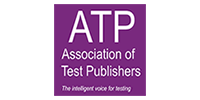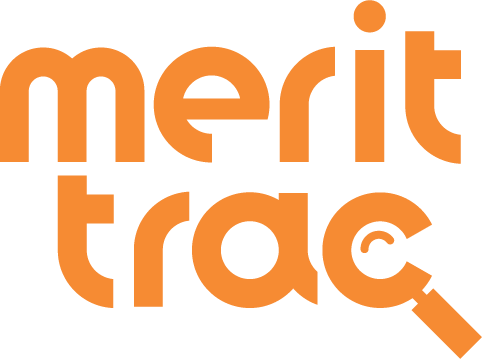
Which Leadership Communication Style Is Most Effective for You? Find Out with Communication Assessments
Date: 28/09/2018 | Posted by: MeritTrac | Category: Communication Assessment , Corporate
In the past, corporate organisations were formal and uniform in structure, communicating in a top-down manner. This approach, however, is shifting with the millennials becoming the largest segment in workplaces across the world.
This generation of workers brings a more innovative and out-of-the-box approach to the workplace. 91% of millennials aspire to step into leadership roles. This surge in awareness and motivation calls for new and innovative leadership communication styles.
But what are these new-age leadership communication styles?
And how do you know which one is right for you?
Here’s a quiz that can help you figure it out.
Choose the option that best resonates with you for each situation to find out which style comes most naturally to you. If choosing between two options is difficult, then you might be using overlapping communication styles.
So let’s get quizzing!
Leadership Communication Styles Quiz
1. A new project is assigned to your team
- You communicate the roadmap for the project and assign tasks to each team member
- You break down the project into smaller tasks and explain to each team member to how to go about it
- You present the project to your team like a challenge and motivate them to come up with an innovative way to go about it
- You invite suggestions on how to approach the project and then choose one of the tasks to be done
- You call for a session to discuss the approach on the project and allow your team members to pick the tasks they want
2. You have a strict deadline to complete a difficult project
- You push your team by setting strict targets for each member and then let them make it happen
- You communicate targets to the team and explain the process to each member individually
- You inspire your team to meet the goal by acknowledging the difficulty of the goal
- You explain the urgency to your team, the approach to be taken, and pick one of the tougher tasks to do yourself
- You appraise your team of the situation and call for suggestions on how to meet the deadline
3. A training program is introduced for employees while your team has an on-going project
- You ask your team to attend the training but not at the cost of their performance in the project
- You push your team members to participate in the training by explaining its long-term relevance
- You share the long-term benefits of the training to your team and leave it to them to prioritise
- You share your own experience of such a training and offer to share the workload of the team
- You ask if your team wants to attend the session and let those who volunteer attend
4. You find that two people in your team do not get along
- You make sure that they are not assigned a task with each other - successful task completion is your priority
- You openly discuss the situation with them and push them to take upon a collaborative task
- You articulate creative ways to make them work collaboratively
- You involve both of them on a project with you
- You discuss their issues with each other individually, and then together, to resolve the situation
5. A team member is going through a tough time personally, and his/her performance might be impacted
- You broach the subject if the performance is negatively affected and suggest why it is best to keep personal and professional aspects separate
- You explain the consequences and suggest time-off for thinking and re-evaluation
- You suggest ways in which the situation can be solved and cut some slack for sometime
- You discuss the situation by sharing your own experience and how you dealt with it
- You have a one-on-one talk first, then ask others to help in making things easier for the team member
Result
Maximum ‘a’ - Authoritarian - You value authority, care for minute details and are result-oriented.
Maximum ‘b’ - Coach – You like to coach with the focus on the overall development of your team. You promote a culture where employees feel inspired and thrive in.
Maximum ‘c’ - Visionary – You are a thinker with foresight who rides on innovation. Your vision is often larger than the team, even the organization at times. You allow your team to work independently and appreciate risk-takers.
Maximum ‘d’ - Forerunner – You are a leader who likes to lead by example. You keep your team motivated by showing them how things are done rather than leaving it to them. You don’t shy away from contributing equally to the team’s goals.
Maximum ‘e’ - Democratic - You aim to build a culture of trust and collaboration. You are open to learning from employees’ feedback and welcome it. You encourage participation from everyone in your team.
Notice that communication styles need not be restricted to a particular type. You can employ a combination of styles to lead successfully.
Scientifically designed communication assessments can help you determine which leadership communication style will work best for you, considering your own personality traits. They can also give you a deeper insight into the areas that you need to focus on - in order to be a more successful leader.
Relationship between Leadership and Communication Styles
Competence in communication is a must for an individual to be an effective leader. It is found that a manager's success is highly correlated with their communication capability.
The different leadership styles directly affect the effectiveness of communication techniques, and these communication techniques can affect the morale of a team in a good or bad way.
Different Communication Styles of Leaders
Democratic, visionary, and coach leadership styles utilise a communication style where employees are encouraged to interact with their team members and managers frequently.
This leadership communication style not only improves teamwork but also helps each employee to understand their strengths and weaknesses.
An authoritarian leader promotes an organised leadership communication style where the interaction with team members is limited, but the communication with the leader is high. While this promotes a focused and coordinated approach to work, it fails to build a team spirit and can also dampen teamwork.
Communication Styles in Management
Different leadership styles exhibit the need for different communication abilities. For example, managers who want to establish a good working relationship with their team members will need advanced communication skills.
They will also need to have a basic understanding of employee psychology and keep several factors in mind before communicating with their subordinates. This way, they will not only be able to express their message well, but the chances of subordinate acting on your advice will also be high.
Irrespective of the intent, to achieve a goal, managers need to communicate in a clear and precise way and use very few yet powerful words to be successful while communicating through emails, video calls, and telephonic calls or during direct communication with superiors or team members.
Communication Styles in the Workplace
Effective communication at the workplace occurs when co-workers, team members, and managers are able to send or decipher an intended message or idea effectively. The ability to communicate clearly and concisely can promote the team's ability to perform various tasks and coordinate with clients and other crucial stakeholders.
When an employee has poor communication skills, it forces their team members into a state where they may have to struggle hard to understand the intended message. This can cause confusion, delay project works, and can even be the reason why good plans fail.
Another important yet overlooked part of communication is the ability to listen. Also, even if a message is communicated clearly, it can be less effective if the intended receiver is not paying attention or has poor listening skills. This is why organisations choose to employ job applications with good listening and speaking skills.
Communication Style Assessments
Communication assessments can help find a job applicant with excellent communication skills. It can also be used to detect the training needs of front-line managers and their team members, which can help to create programs that aim to develop relevant communication skills.
There are numerous online communication assessments such as the Written English Test, the listening comprehension test, and verbal ability test that deliver an accurate understanding of a job applicant or an employee's communication skills.
Conclusion:
A leader or an employee's success largely depends on the communication style they follow and the effective communication structures they develop within their team.
MeritTrac offers some of the best communication style assessments that can provide you with a deeper insight into a job applicant or an employee's communication competence.
With our assessment solutions, you can evaluate their ability to listen, understand, and respond to verbal communication. You can also gain an understanding of the business language they use to create emails, reports, memos, and other forms of written communication and their ability to choose the right words when communicating at the workplace.

Communication is the number one skill gap across companies of all sizes.
MeritTrac’s communication assessment solutions work across three key language elements: written English, spoken English and active listening comprehension – to holistically assess a candidate’s English language proficiency.
Handpicked Articles for Futher Reading
Relevant Case Studies













 Sales Hotline: USA: +1 646 916 0939 / Others: +91 80619 14700
Sales Hotline: USA: +1 646 916 0939 / Others: +91 80619 14700


